Intel Updates the NUC at CES 2015 with Broadwell-U
by Ian Cutress on January 12, 2015 12:18 PM EST- Posted in
- Systems
- Intel
- SFF
- Trade Shows
- NUC
- Mini-PC
- CES 2015
- Broadwell-U
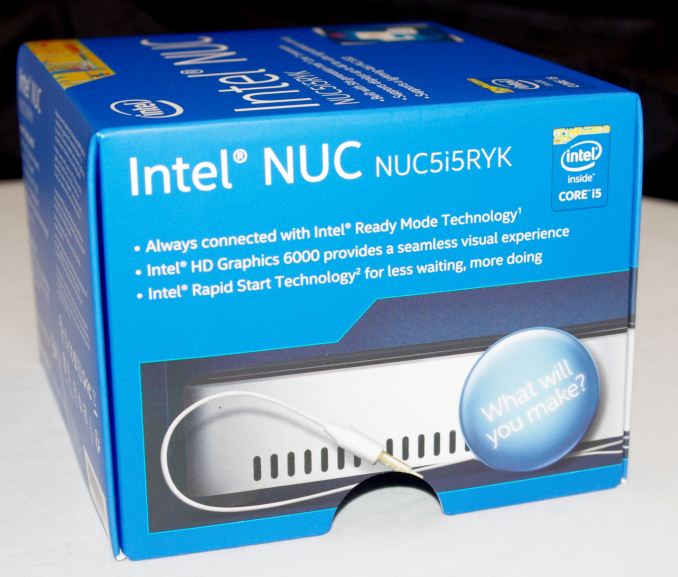
The big topic going in to CES was the launch of Broadwell-U, Intel’s 14 nanometer 5th generation Core products for laptops, mini-PCs and all-in-ones, with rated TDPs of 15W and 28W and the new Generation 8 graphics onboard. Into the mini-PC category falls the NUC form factor, invented by Intel a number of years ago. The NUC, or ‘Next Unit of Computing’, provides a chassis, motherboard, processor and fan with the user or system integrator to add in their own storage and DRAM, all with the aim of building something that can be VESA mounted to many compatible monitors on the market or just run as that small device on the desk. At CES 2015, Intel is updating its NUC range from Haswell-U to Broadwell-U.
15W is not really suitable for fanless without increasing size, so the NUC comes with a fan in the i3, i5 and i7 configurations, supporting up to HD 6000 graphics (48 EUs). Connectivity will come as a gigabit Ethernet port, two USB 3.0 ports, a micro-HDMI and a mini-DisplayPort, offering a full 4K implementation.
The double sided PCB gives space for an M.2 2242, 2260 or 2280 drive, along with a mini-PCIe WiFi card and two modules of memory. Users can add a 2.5-inch to the device through that SATA port as well.
In this i5 model packaging, the dual band dual stream AC-7265 is bundled onboard as a pre-soldered M.2 1216 package, with the module itself offering lower power consumption than the AC-7260 which is what we have seen in the desktop space for the past year.
The unit also gives a fast charging USB 3.0 port in yellow. We asked about USB 3.1 support on future NUCs, but in true Intel style they were not giving anything away. For the NUC team to move into USB 3.1, it would make more sense when the standard moves onto the chipset of the SoC, which might be a couple of generations away.
Also for release is this Bay Trail-T system with Windows on a stick. It directly attaches to a TV or monitor through the HDMI and uses a separate USB cable from the device to the monitor for power. Under the hood is 2GB of DRAM and 32GB of eMMC which equates to a full system in a form factor barely bigger than your thumb.
Our recent Bay Trail coverage with the HP Stream 11 at $199 and the J1800N motherboard puts an expectation of price level for these new systems, especially in terms of expectation of performance against what is possible. With this new device Intel is aiming for the $149 price point, which compared to the HP Stream 11 with a keyboard, screen and Miracast might seem like an average deal for home use, Intel is aiming to market this at the digital signage and the point-of-sale markets.


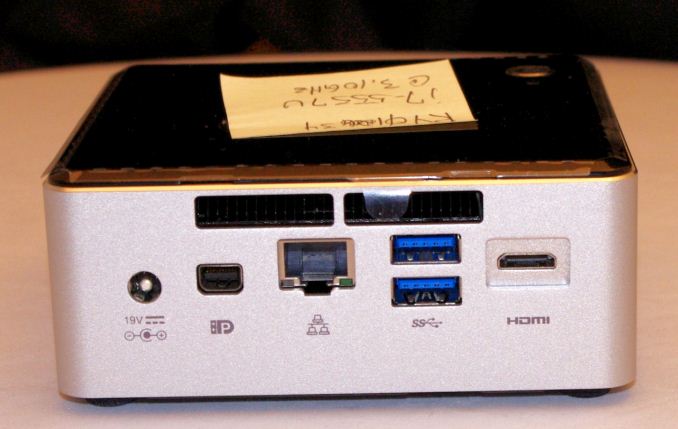
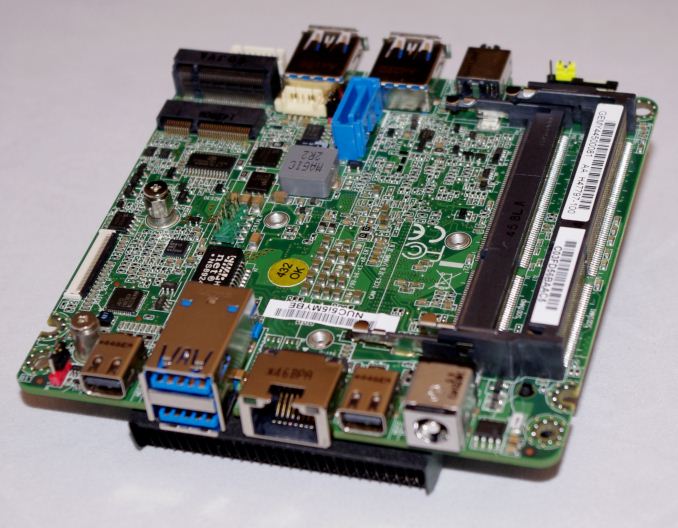
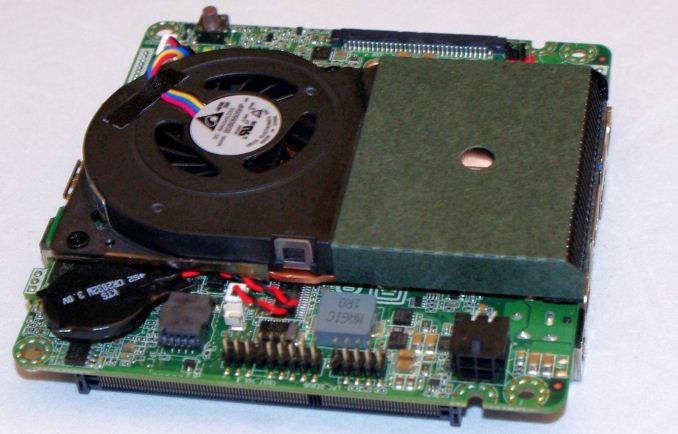
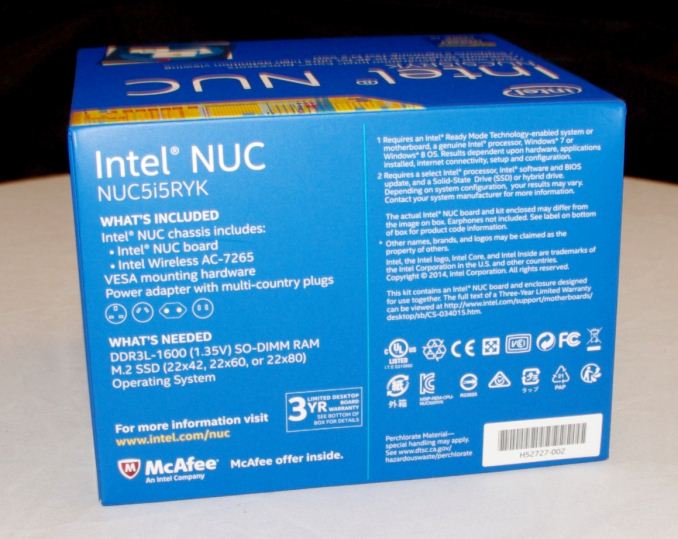
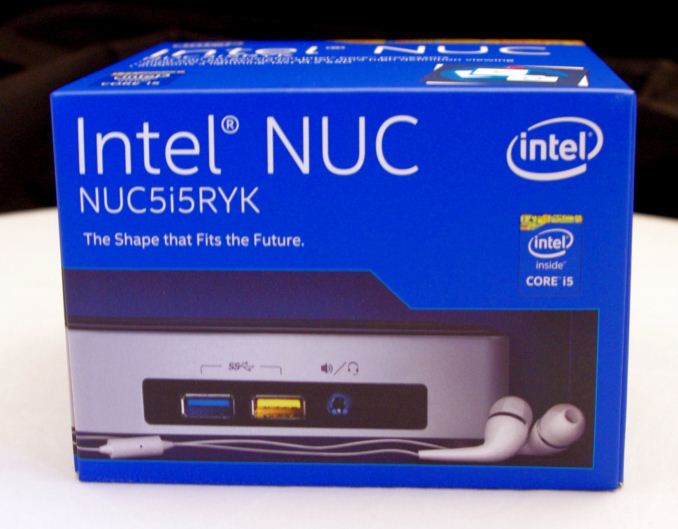
















32 Comments
View All Comments
jhoff80 - Monday, January 12, 2015 - link
My solution for issues like this (where the auto-detect is an issue) has always been to tape off pin 19 (hot plug detect) on the HDMI cable, which prevents Windows from sensing that a display is connected/disconnected. Been doing it for years now, with the only side effect being that I need to make sure the TV (and receiver) is turned on before booting the PC.imaheadcase - Monday, January 12, 2015 - link
That the only issue? Because I don't have any issues on Win 8.1 Pro on my haswell NUC on Kodi.Sadheal - Monday, January 12, 2015 - link
Hi, this new Nuc has been reviewed here already, but the Core i3 version :http://www.01net.com/fiche-produit/prise-main-1928...
You can Google trad it if you need :)
Tests results here :
http://www.01net.com/fiche-produit/resultats-tests...
Comparison with other mini-PCs here :
http://www.01net.com/tests-comparatifs/classement-...
ganeshts - Monday, January 12, 2015 - link
Take them with a grain of salt - Intel told us that they are still finalizing the BIOS with performance and stability tweaks.Sadheal - Tuesday, January 13, 2015 - link
Apparently the Core i3 is not even throttling in full GPU and CPU load !Devo2007 - Monday, January 12, 2015 - link
Just when I was about to buy one of the Haswell ones this week. :(kgh00007 - Tuesday, January 13, 2015 - link
Hi, these new nuc's take an M.2 form factor SSD, but do they still use the SATA III interface/mSata interface or can you install a PCIE M.2 SSD?K_Space - Friday, February 6, 2015 - link
I'm pretty sure its SATA III although can't remember the source URL.K_Space - Friday, February 6, 2015 - link
I stand corrected. Both the Product brief and intel support centre acknowledge support for PCI mSATA devices i.e. Samsung SM951.http://www.intel.com/content/www/us/en/nuc/nuc-kit...
http://www.intel.com/support/motherboards/desktop/...
aLPHa_NRG - Saturday, February 14, 2015 - link
Sorry I do not want to sound smart, but is this actually a Intel issue? How old is your receiver? I am also considering this nuc. But I want to know if the issue shows up with all receivers. If this does not work and the issue lies in it's design by Intel it is a deal breaker for me. Are there any hassle free alternatives?